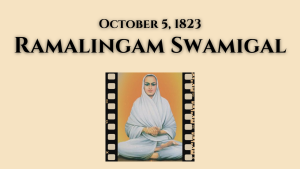Font size:
Print
Rani Durgavati
Context:
500th Birth Anniversary of Rani Durgavati.
About:
- Born on 5 October 1524 in Kalinjar (Banda district, Uttar Pradesh).
- Daughter of Raja Salbahan of Ratha and Mahoba, a descendant of the Chandela dynasty.
- Named Durgavati she was born on the festival of Durgashtami, symbolising strength and valour.
- At the age of 18, she married Dalpat Shah, son of Gond King Sangram Shah of Garha-Katanga.
- This marriage cemented a strategic alliance between the Chandela dynasty and the Gond kingdom.
- Rani Durgavati, a formidable queen of the Gondwana kingdom, ruled from 1550 until her death in 1564.
- Born into the Chandela dynasty, she became a symbol of resistance against Mughal expansion in India. Her reign was marked by significant contributions to her kingdom’s autonomy and independence, especially during the Mughal invasions led by Asaf Khan.
Garha-Katanga Kingdom
- Garha-Katanga (later Garha-Mandal) emerged post-Timur’s invasion (1398) when King Yadavrai threw off Sultanate rule.
- The kingdom’s name was derived from the towns of Garha and Katanga near Jabalpur, Madhya Pradesh.
- During Sangram Shah’s reign, the kingdom expanded and included areas corresponding to present-day Mandla, Jabalpur, Narsinghpur, Hoshangabad, Bhopal, Sagar, Damoh in Madhya Pradesh, and parts of Chhattisgarh.
Leadership and Governance
- Ascendancy to Power: After the death of her husband, Raja Dalpat Shah, Rani Durgavati took charge of the kingdom, installing her young son, Bir Narayan, on the throne while effectively ruling as regent.
- She displayed strong administrative skills by managing state affairs with the help of trusted ministers like Adhar Kayastha and Man Brahman.
- Infrastructure Development: Rani Durgavati initiated various public works, including the construction of reservoirs such as Ranital, Cherital, and Adhartal. These projects not only improved agriculture but also showcased her commitment to her people’s welfare.
Military Resistance Against the Mughals:
- Battle of Damoh/Narrai (1564): The most notable confrontation with the Mughal Empire occurred during the Battle of Damoh. Despite being outnumbered, Rani Durgavati displayed exceptional bravery and strategic acumen.
- She positioned her forces in a strategically advantageous location between two rivers and high ridges, which initially allowed her to repel Mughal advances.
- During the battle, she utilised clever military strategies to outmanoeuvre Asaf Khan’s forces. Her ability to inspire her troops and maintain morale even in dire circumstances was crucial in delaying the Mughal advance.
Martyrdom and Legacy:
- Choice of Death Over Captivity: Facing inevitable defeat and capture by the Mughals, Rani Durgavati chose to end her life rather than surrender. This act of self-sacrifice on June 24, 1564, solidified her status as a martyr and a symbol of resistance against oppression. Her martyrdom is commemorated annually as ‘Balidan Diwas‘ (Martyr’s Day) in Madhya Pradesh.
- Cultural Impact: Rani Durgavati’s legacy as a warrior queen continues to inspire pride in Indian history. She is celebrated for her courage and commitment to her principles, embodying the spirit of resistance against colonial forces. Various institutions and memorials have been established in her honour, including Rani Durgavati University in Jabalpur.



